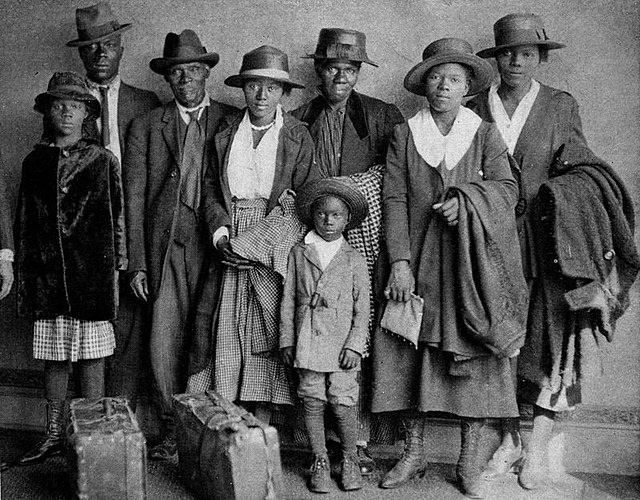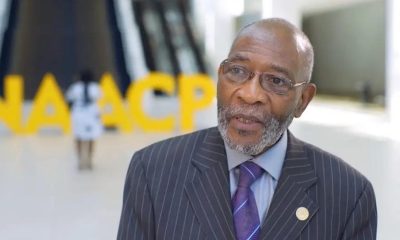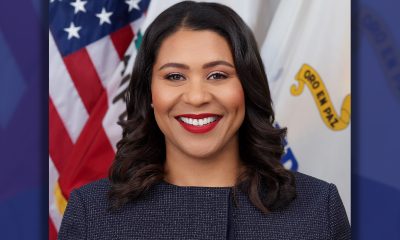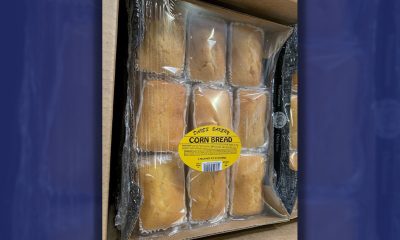Black History
The Way West: Reparations Task Force Looks at Black Migration to California
During its third meeting, California’s Task Force to Study and Develop Reparation Proposals for African Americans looked at reasons formerly enslaved Black people migrated to the Golden State — and detailed setbacks they faced after arriving.

I was leaving the South
to fling myself into the unknown…
I was taking a part of the South
to transplant in alien soil,
to see if it could grow differently,
if it could drink of new and cool rains,
bend in strange winds,
respond to the warmth of other suns
and, perhaps, to bloom.
- Richard Wright, the author of Black Boy, 1945
During its third meeting, California’s Task Force to Study and Develop Reparation Proposals for African Americans looked at reasons formerly enslaved Black people migrated to the Golden State — and detailed setbacks they faced after arriving.
During the period historians dub the “Great Migration”– which lasted from the early 1900s through the 1970s – approximately 6 million Black Americans relocated from Deep South states to Northern, Midwestern, Eastern and Western states. Significant numbers ended up in California, escaping Jim Crow laws and racial violence and seeking economic opportunity.
Isabel Wilkerson, author of “The Warmth of Other Suns: The Epic Story of America’s Great Migration, “described the movement as “a redistribution of Black people.”
“It was the only time in America’s history that American citizens had to flee the land of their birth just to be recognized as the citizens that they had always been,” Wilkerson said, pointing out that no other group of Americans has been displaced under similar conditions.
After President Lincoln signed the Emancipation Proclamation, the Reconstruction era began. It was a period of prosperity as some Blacks in different places began to establish businesses and communities; contest for (and win) political office; establish schools, and more.
But it was short-lived because of white backlash, Wilkerson said.
By the early 1900s, racist white Southerners began to terrorize freed Black people with cross burnings, and racial violence — and discriminate against them by instituting Jim Crow laws.
There was a spike in lynchings, and a sharecropping system that mirrored the conditions of slavery began to take form in the 11 former slaveholding states.
Under those policies, opportunities for Blacks were almost nonexistent.
After World War World I began in Europe in 1914, there was a shortage of labor. Factories started luring Black people North to fill vacancies. By 1919, an estimated 1 million Southern Blacks had departed for the North.
By the 1930s, the Great Depression had slowed Black migration. But the revival of the exodus from the South, a period historians call the “Second Great Migration,” started around 1939.
This time around, California was a major destination.
As Black people left the South, Wilkerson said, they “followed three, beautifully predictable streams — pathways to freedom.” The first two led to Eastern and Midwestern states. The “West Coast stream,” Wilkerson told the task force, “carried people from Louisiana and Texas out to California and the entire West Coast.”
World War II created an expansion of the country’s defense industry, according to the Southern California public television network,. During this time, more jobs were available to African Americans. California cities such as Los Angeles, San Francisco and Oakland began to see an influx of Black people.
According to KCET, a Southern California public television network, the Black population in Los Angeles grew from 63,700 in the 1940s to 763,000 in 1970. The migration was largely fueled by job openings in industries manufacturing automobiles, rubber, and steel. The presence of Blacks became evident along Central Avenue between 8th and 20th streets in California’s largest city.
“(Black southerners) were recruited to the North and West to fill labor shortages in the steel mills, factories and shipyards,” Wilkerson said. “It turned out that they wanted the labor but did not want the people.”
The response to the Great Migration was “structural barriers of exclusion,” Wilkerson said. Restrictive covenants required white property owners to agree not to sell to Black people and many areas in large and mid-range cities were redlined to deny services to Blacks.
“By law and by policies, parents, grandparents or great-grandparents of almost every African American alive today (were denied) the greatest source of wealth in this country: homeownership, the American Dream itself,” Wilkerson said.
“With all the testimony I’ve heard, I don’t see how any person of conscience, character and civility could not understand that the facts have been given,” said Task Force vice-chair, the Rev. Amos Brown, pastor of Third Baptist Church in San Francisco and president of that city’s NAACP branch.
The purpose of the nine-member task force is to study and develop reparation proposals for African Americans and recommend appropriate ways to educate the Californians about the task force’s findings.
Sanctioned from 1619 to 1865, legalized slavery in the United States deprived more than 4 million Africans and their descendants of citizenship rights and economic opportunity. After it was abolished, government institutions at the federal, state, and local levels perpetuated, condoned, and often profited from practices that disadvantaged African Americans and excluded them from participation in society.
“On those sugar, rice, and tobacco fields (in the deep south) were opera singers, jazz musicians, novelists, surgeons, attorneys, professors, accountants, and legislators,” Wilkerson said. “How do we know that? Because that is what they and their children, grandchildren and now great-grandchildren have often chosen to become.”
Wilkerson first gained national attention in 1994, when she became the first Black woman to win the Pulitzer Prize for Feature Writing in 1994, while employed as Chicago Bureau Chief of The New York Times.
Wilkerson’s parents are both from Southern states, but they stayed in Wash., D.C., where she was born, after meeting at Howard University. It was her parents’ migration northward, she says, that inspired her research on an era that helped to shape the country’s current demographics.
“Slavery has lasted so long that it will not be until next year, 2022, that the United States would have been a free and independent nation for as long as slavery lasted on this soil,” she said.
Activism
S.F. Black Leaders Rally to Protest, Discuss ‘Epidemic’ of Racial Slurs Against Black Students in SF Public School System
Parents at the meeting spoke of their children as no longer feeling safe in school because of bullying and discrimination. Parents also said that reported incidents such as racial slurs and intimidation are not dealt with to their satisfaction and feel ignored.

By Carla Thomas
San Francisco’s Third Baptist Church hosted a rally and meeting Sunday to discuss hatred toward African American students of the San Francisco Unified School District (SFUSD).
Rev. Amos C. Brown, president of the San Francisco NAACP and pastor of Third Baptist Church, along with leadership from local civil rights groups, the city’s faith-based community and Black community leadership convened at the church.
“There has been an epidemic of racial slurs and mistreatment of Black children in our public schools in the city,” said Brown. “This will not be tolerated.”
According to civil rights advocate Mattie Scott, students from elementary to high school have reported an extraordinary amount of racial slurs directed at them.
“There is a surge of overt racism in the schools, and our children should not be subjected to this,” said Scott. “Students are in school to learn, develop, and grow, not be hated on,” said Scott. “The parents of the children feel they have not received the support necessary to protect their children.”
Attendees were briefed last Friday in a meeting with SFUSD Superintendent Dr. Matt Wayne.
SFUSD states that their policies protect children and they are not at liberty to publicly discuss the issues to protect the children’s privacy.
Parents at the meeting spoke of their children as no longer feeling safe in school because of bullying and discrimination. Parents also said that reported incidents such as racial slurs and intimidation are not dealt with to their satisfaction and feel ignored.
Some parents said they have removed their students from school while other parents and community leaders called on the removal of the SFUSD superintendent, the firing of certain school principals and the need for more supportive school board members.
Community advocates discussed boycotting the schools and creating Freedom Schools led by Black leaders and educators, reassuring parents that their child’s wellbeing and education are the highest priority and youth are not to be disrupted by racism or policies that don’t support them.
Virginia Marshall, chair of the San Francisco NAACP’s education committee, offered encouragement to the parents and students in attendance while also announcing an upcoming May 14 school board meeting to demand accountability over their mistreatment.
“I’m urging anyone that cares about our students to pack the May 14 school board meeting,” said Marshall.
This resource was supported in whole or in part by funding provided by the State of California, administered by the California State Library via California Black Media as part of the Stop the Hate Program. The program is supported by partnership with California Department of Social Services and the California Commission on Asian and Pacific Islander American Affairs as part of the Stop the Hate program. To report a hate incident or hate crime and get support, go to CA vs Hate.
Activism
Oakland Post: Week of May 1 – 7, 2024
The printed Weekly Edition of the Oakland Post: Week of May 1 – 7, 2024

To enlarge your view of this issue, use the slider, magnifying glass icon or full page icon in the lower right corner of the browser window. ![]()
Activism
Oakland Post: Week of April 24 – 30, 2024
The printed Weekly Edition of the Oakland Post: Week of April 24 – 30, 2024

To enlarge your view of this issue, use the slider, magnifying glass icon or full page icon in the lower right corner of the browser window. ![]()
-

 Community3 weeks ago
Community3 weeks agoFinancial Assistance Bill for Descendants of Enslaved Persons to Help Them Purchase, Own, or Maintain a Home
-

 City Government5 days ago
City Government5 days agoCourt Throws Out Law That Allowed Californians to Build Duplexes, Triplexes and RDUs on Their Properties
-

 Business3 weeks ago
Business3 weeks agoV.P. Kamala Harris: Americans With Criminal Records Will Soon Be Eligible for SBA Loans
-

 Activism2 weeks ago
Activism2 weeks agoOakland Post: Week of April 24 – 30, 2024
-

 Activism4 weeks ago
Activism4 weeks agoOakland Post: Week of April 10 – 16, 2024
-

 Community3 weeks ago
Community3 weeks agoAG Bonta Says Oakland School Leaders Should Comply with State Laws to Avoid ‘Disparate Harm’ When Closing or Merging Schools
-

 Community3 weeks ago
Community3 weeks agoRichmond Nonprofit Helps Ex-Felons Get Back on Their Feet
-

 Community3 weeks ago
Community3 weeks agoOakland WNBA Player to be Inducted Into Hall of Fame
















































